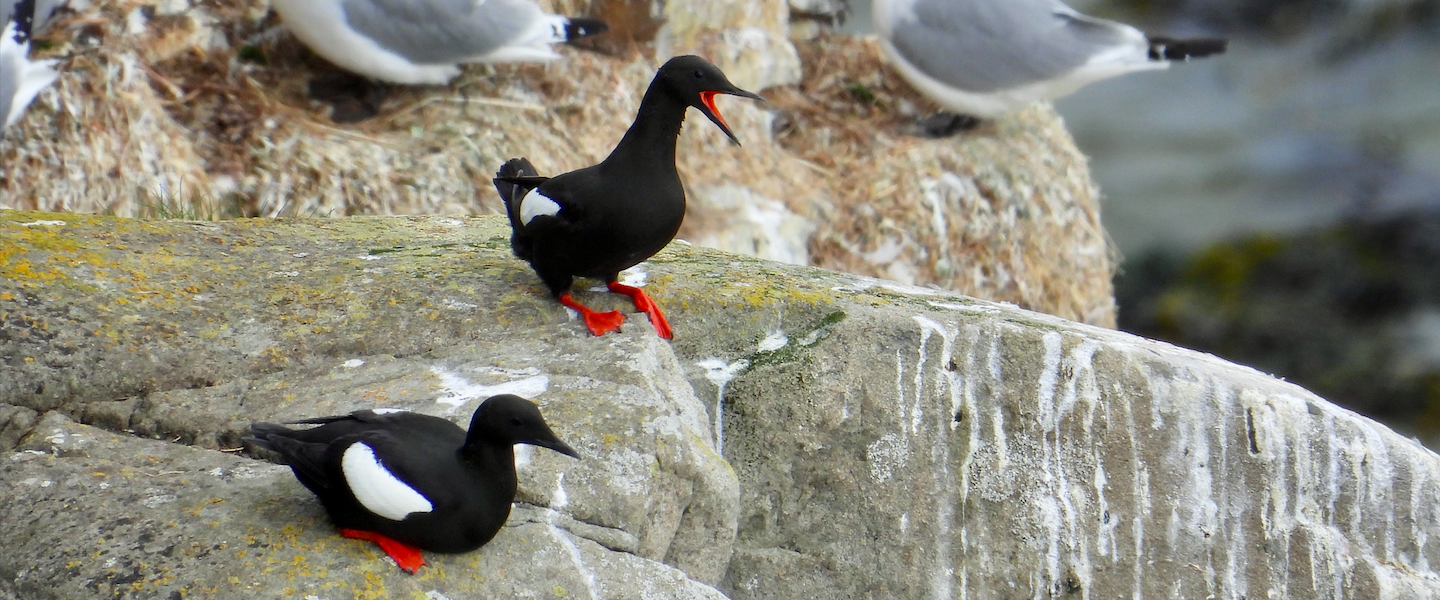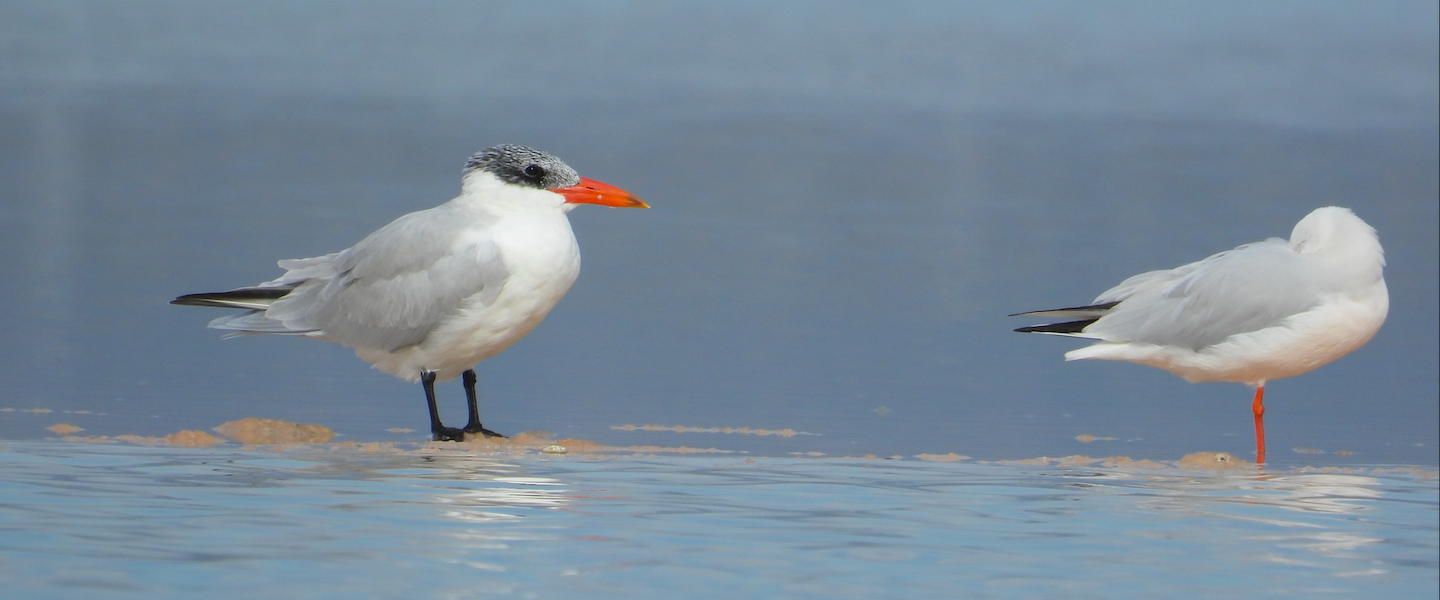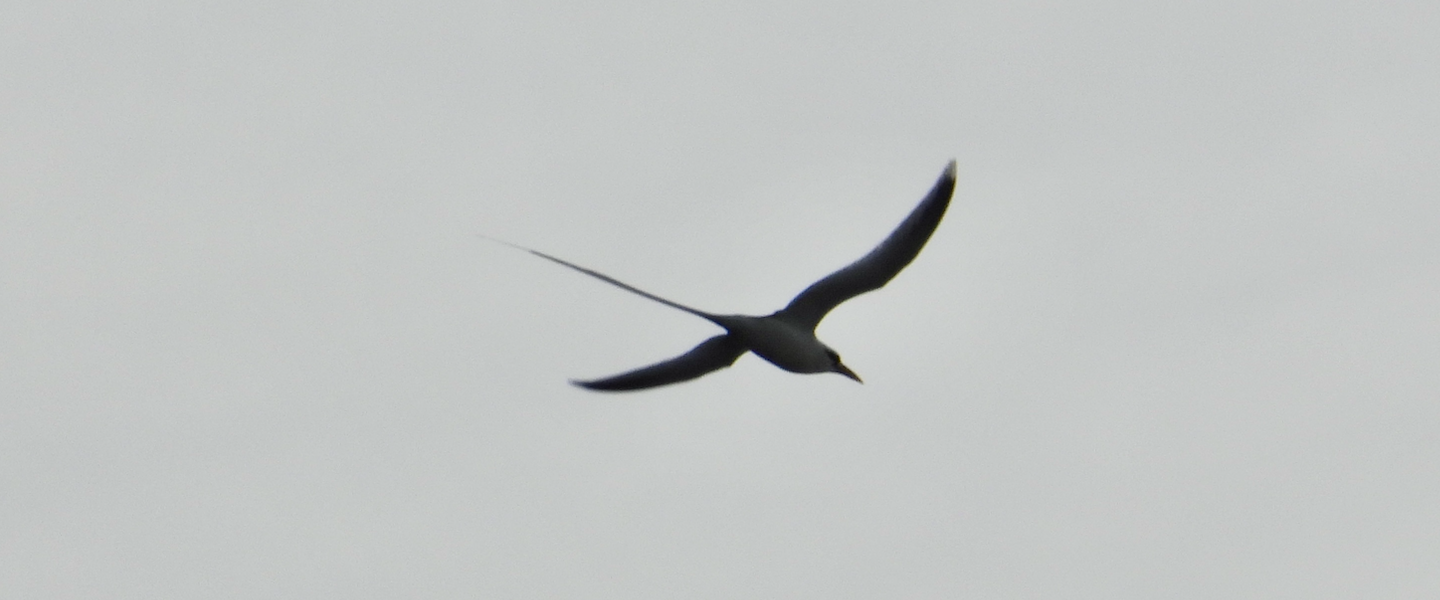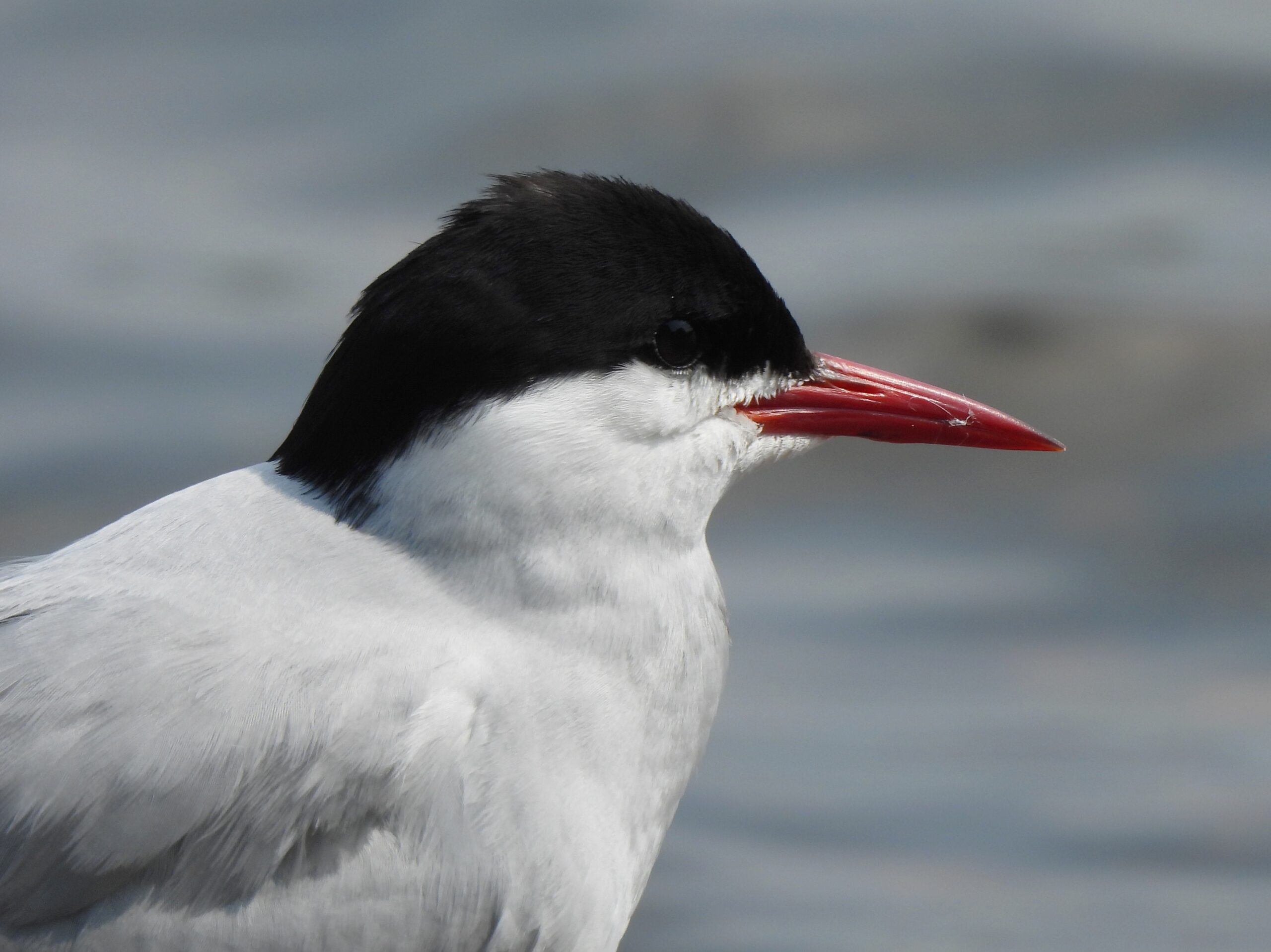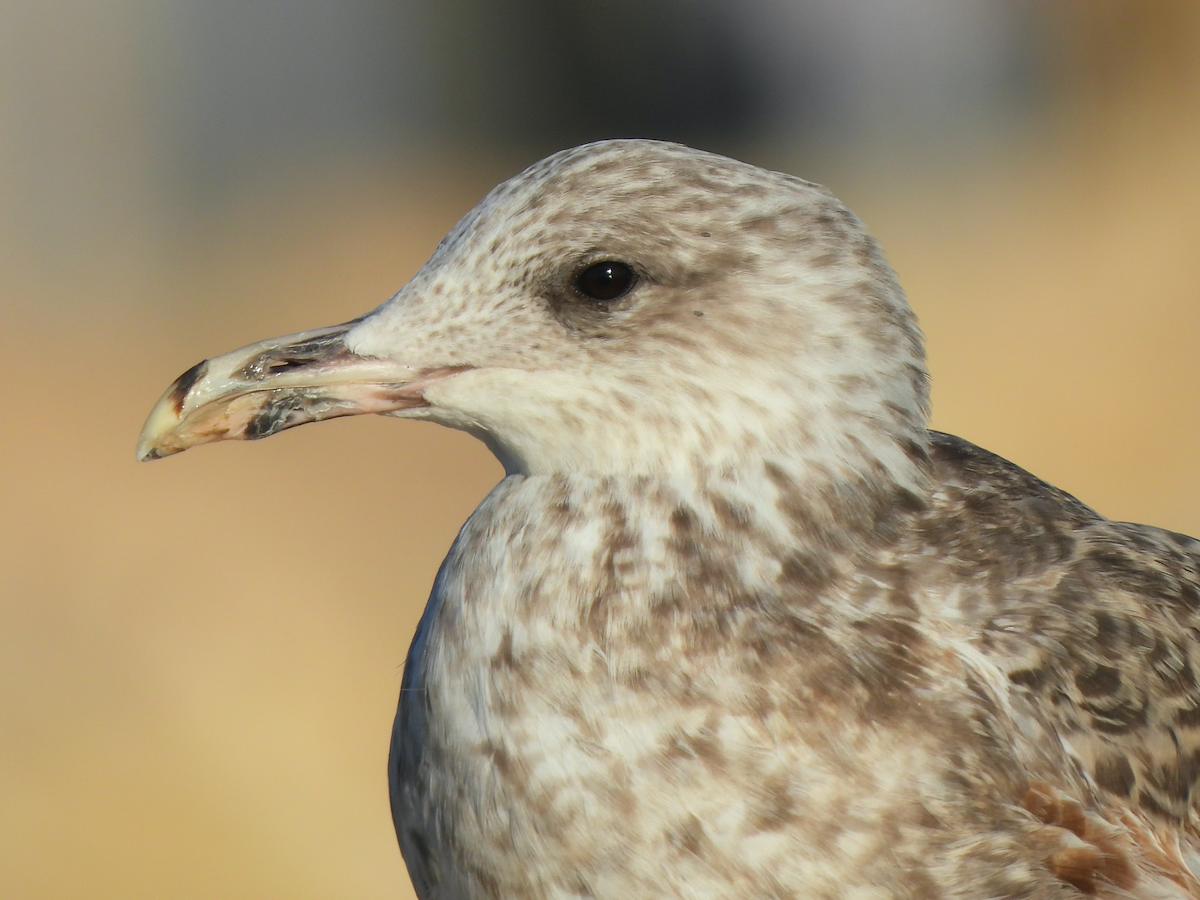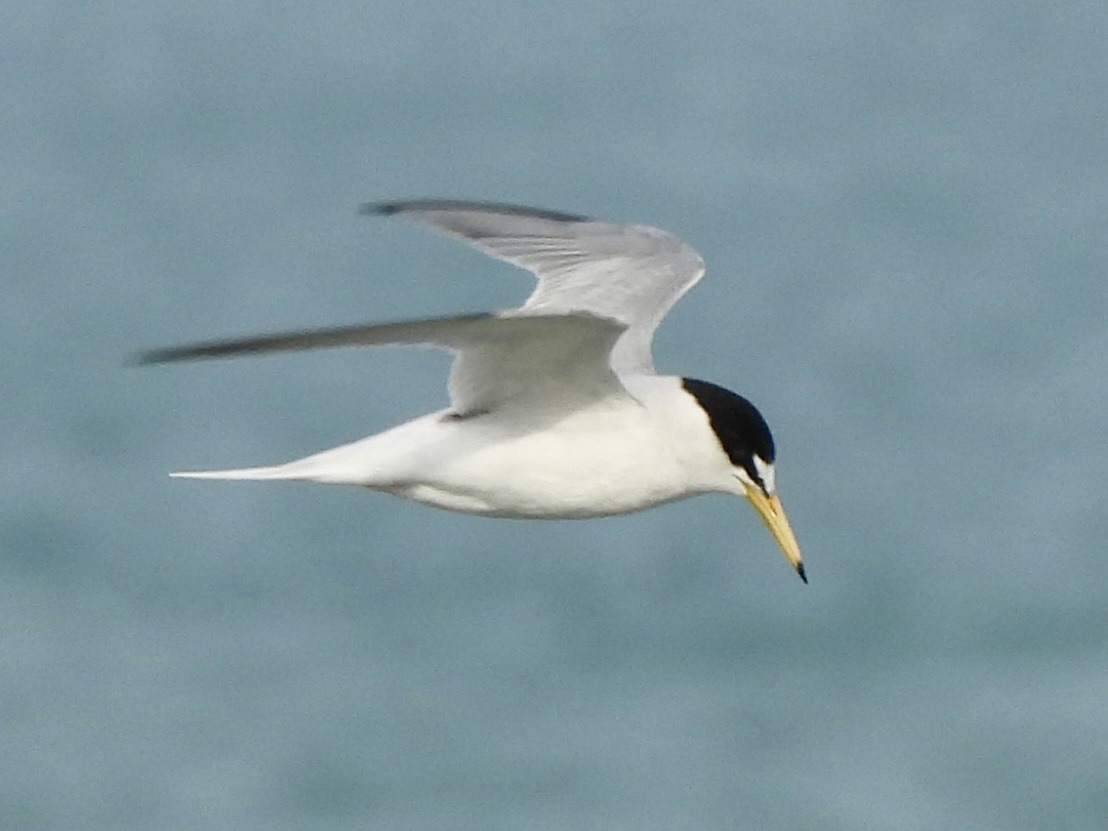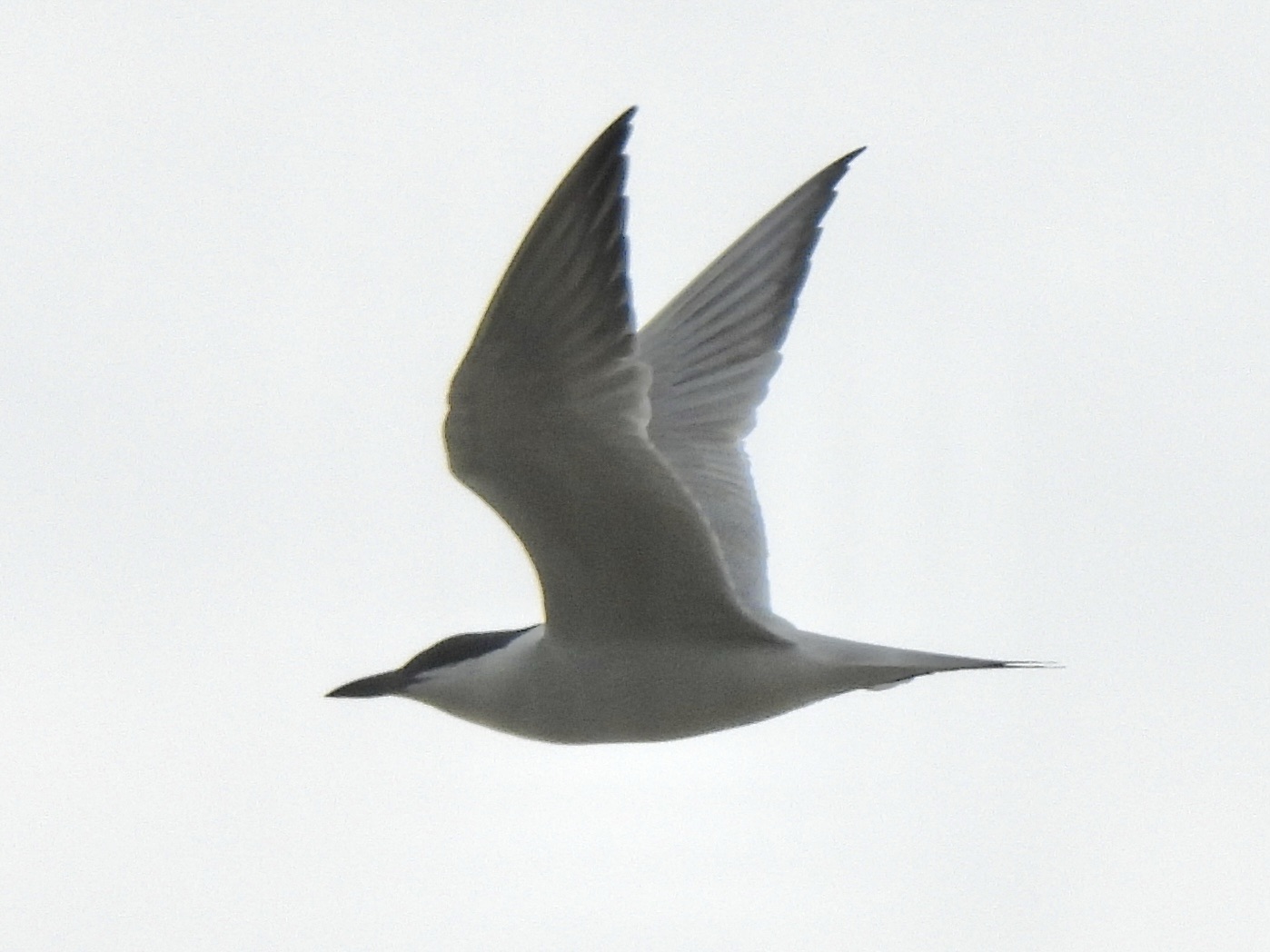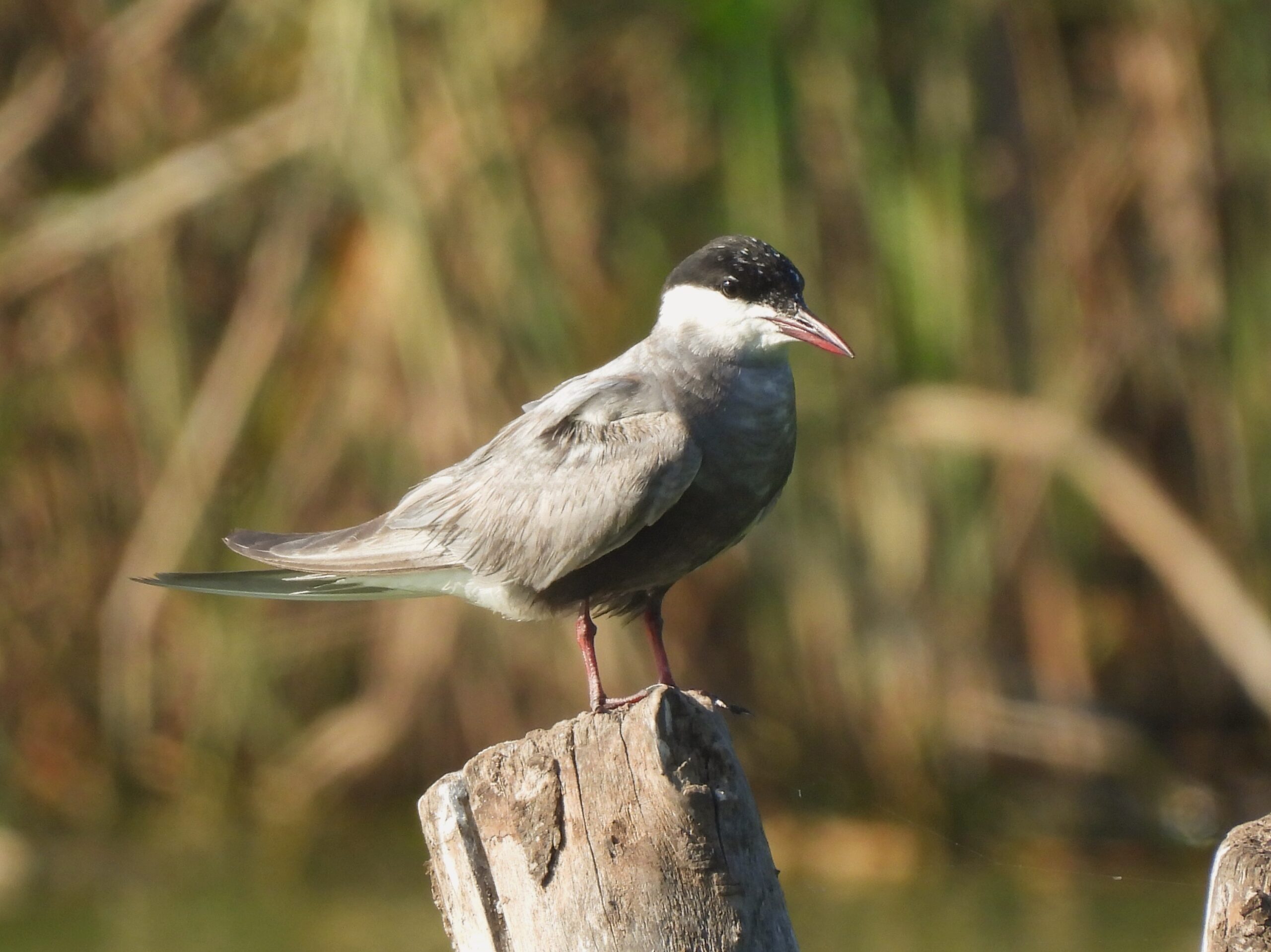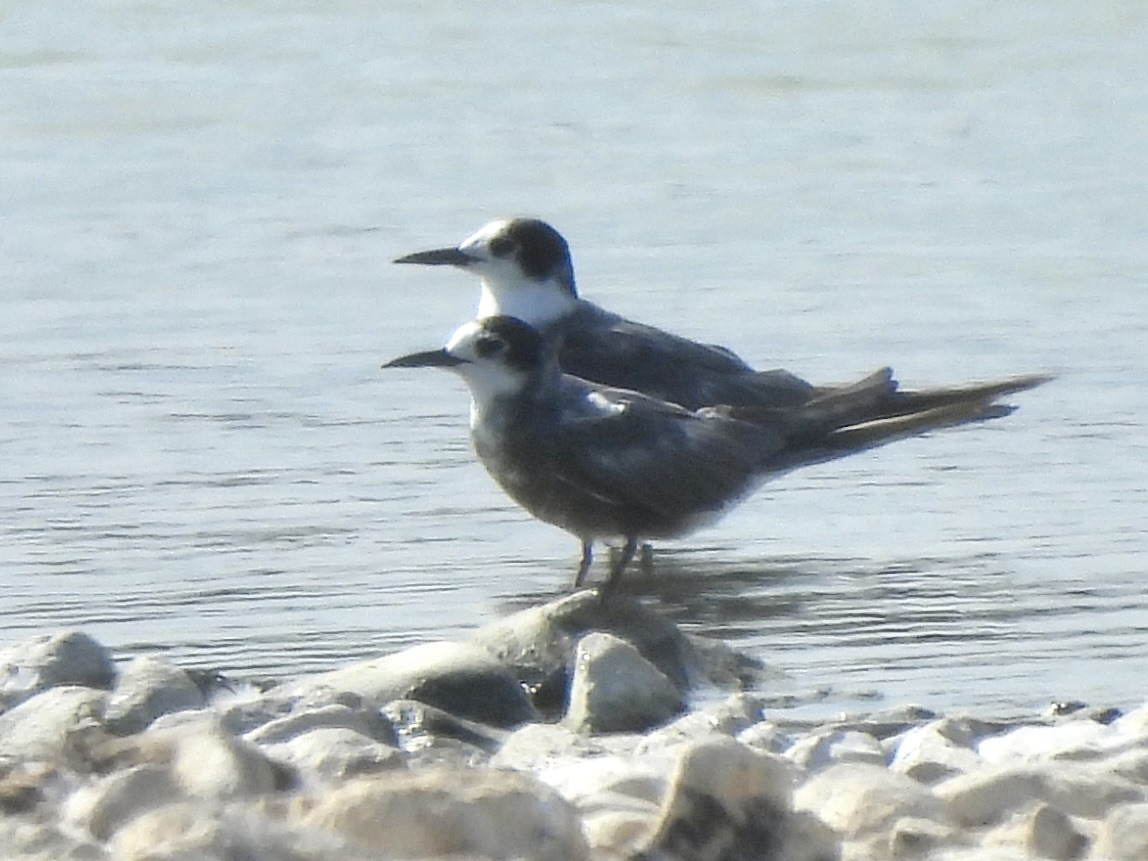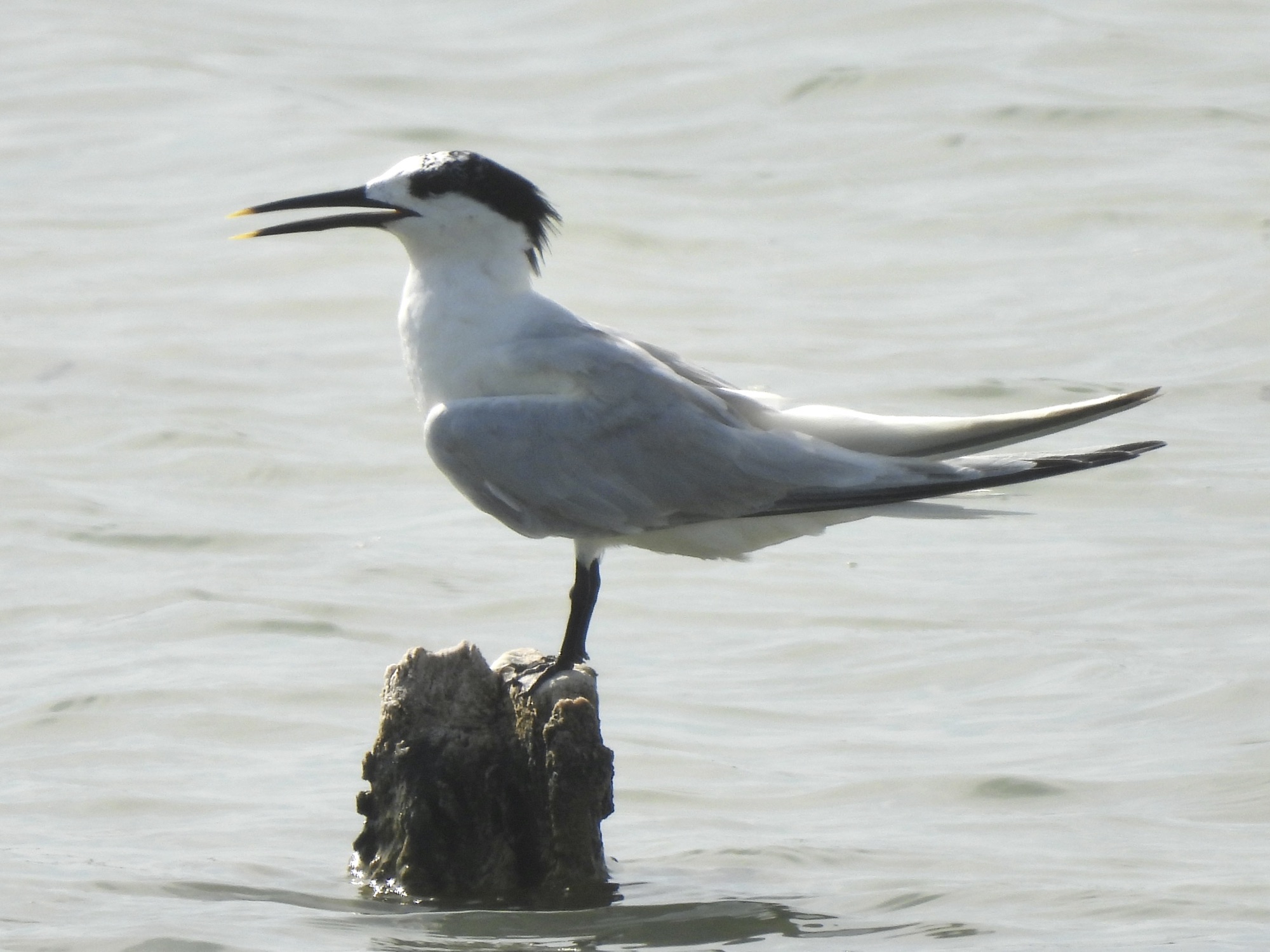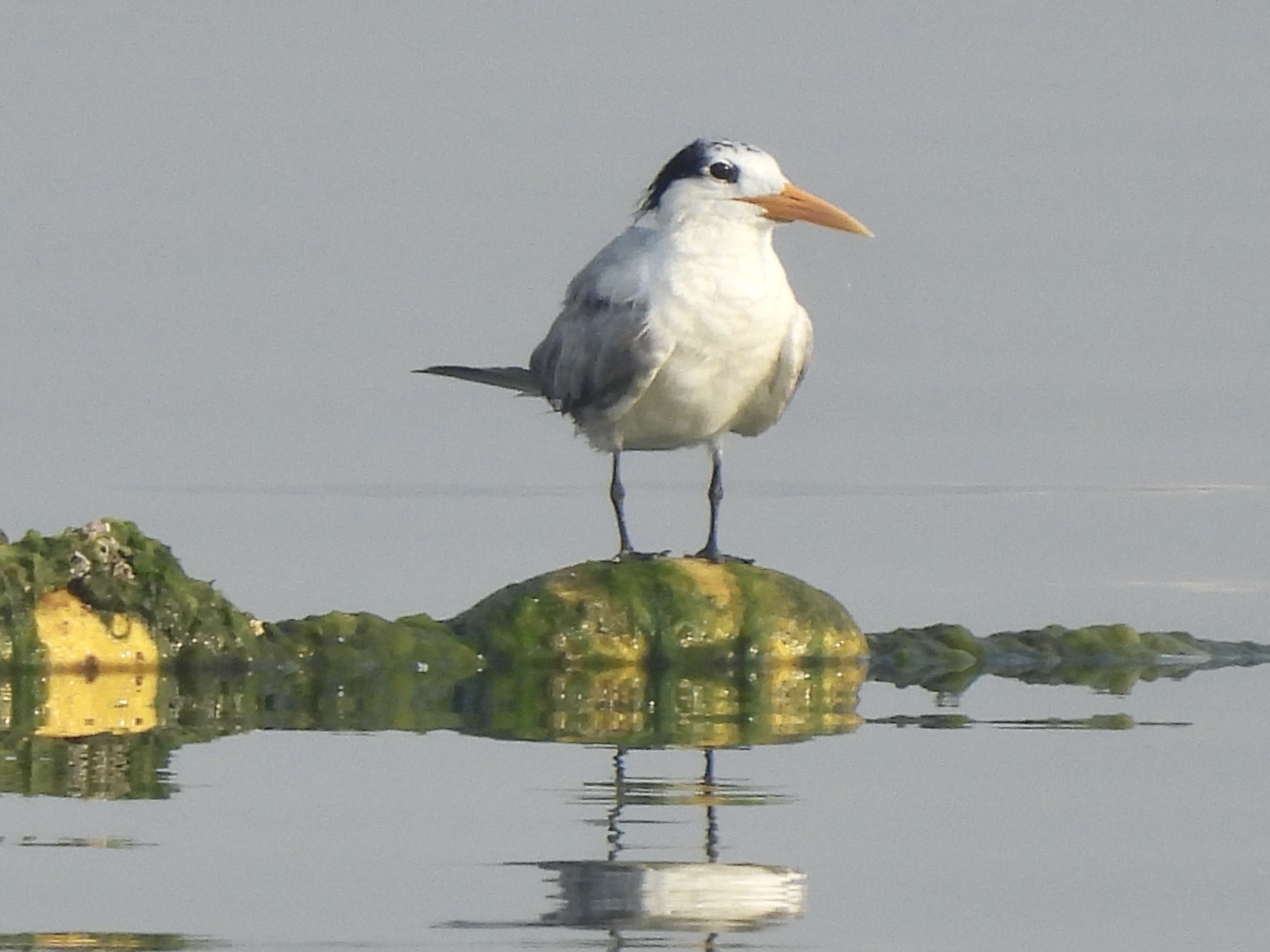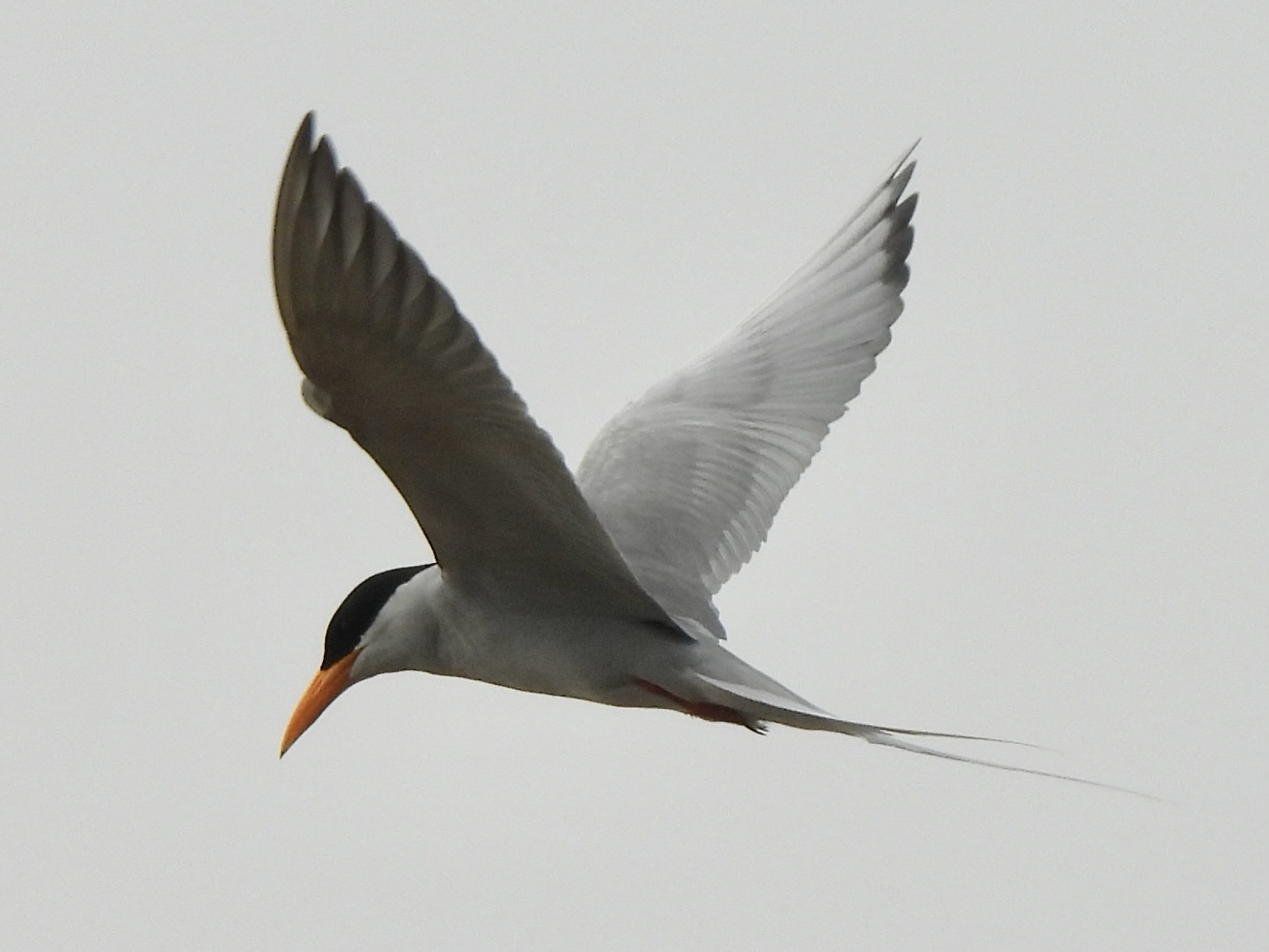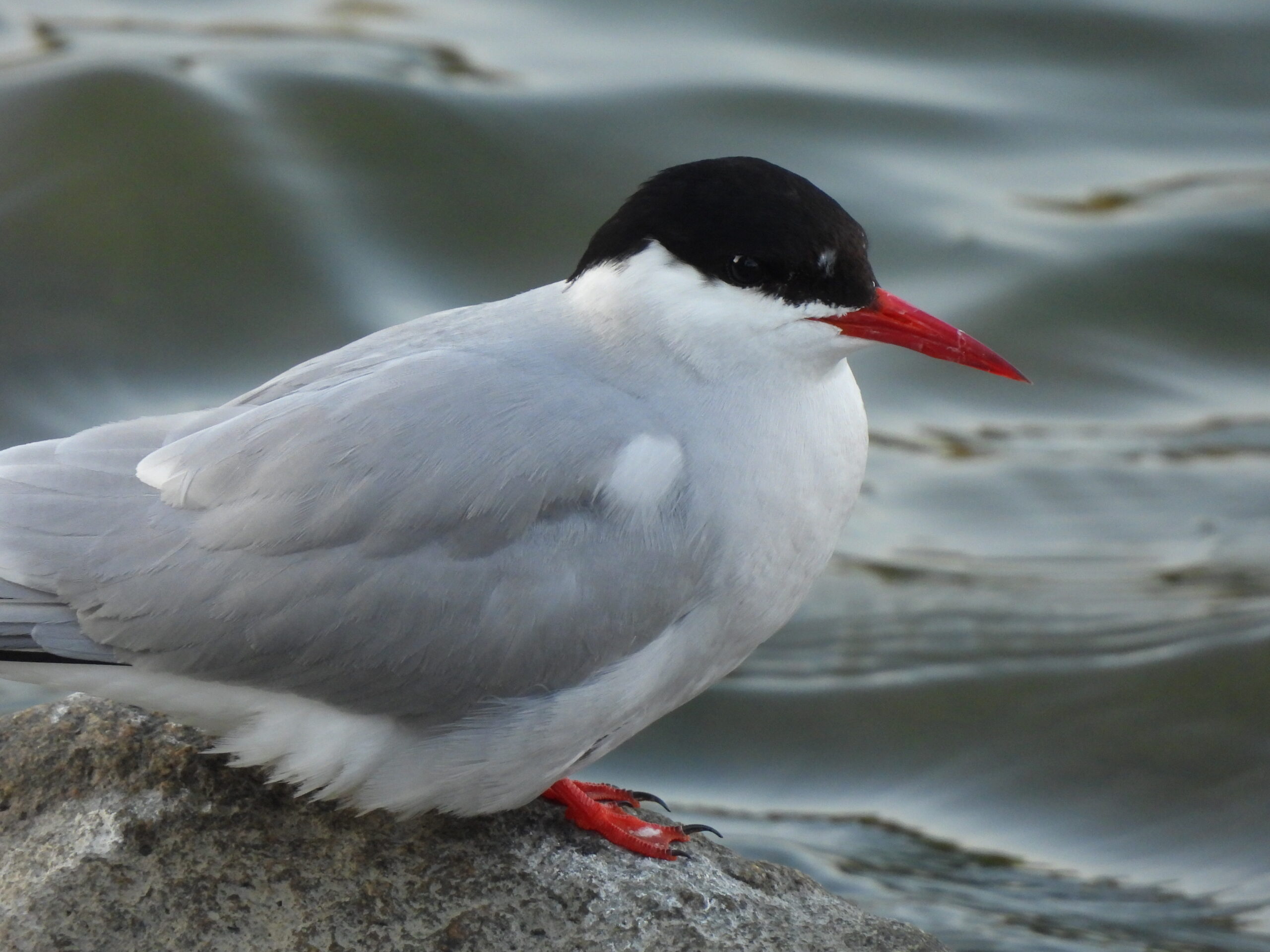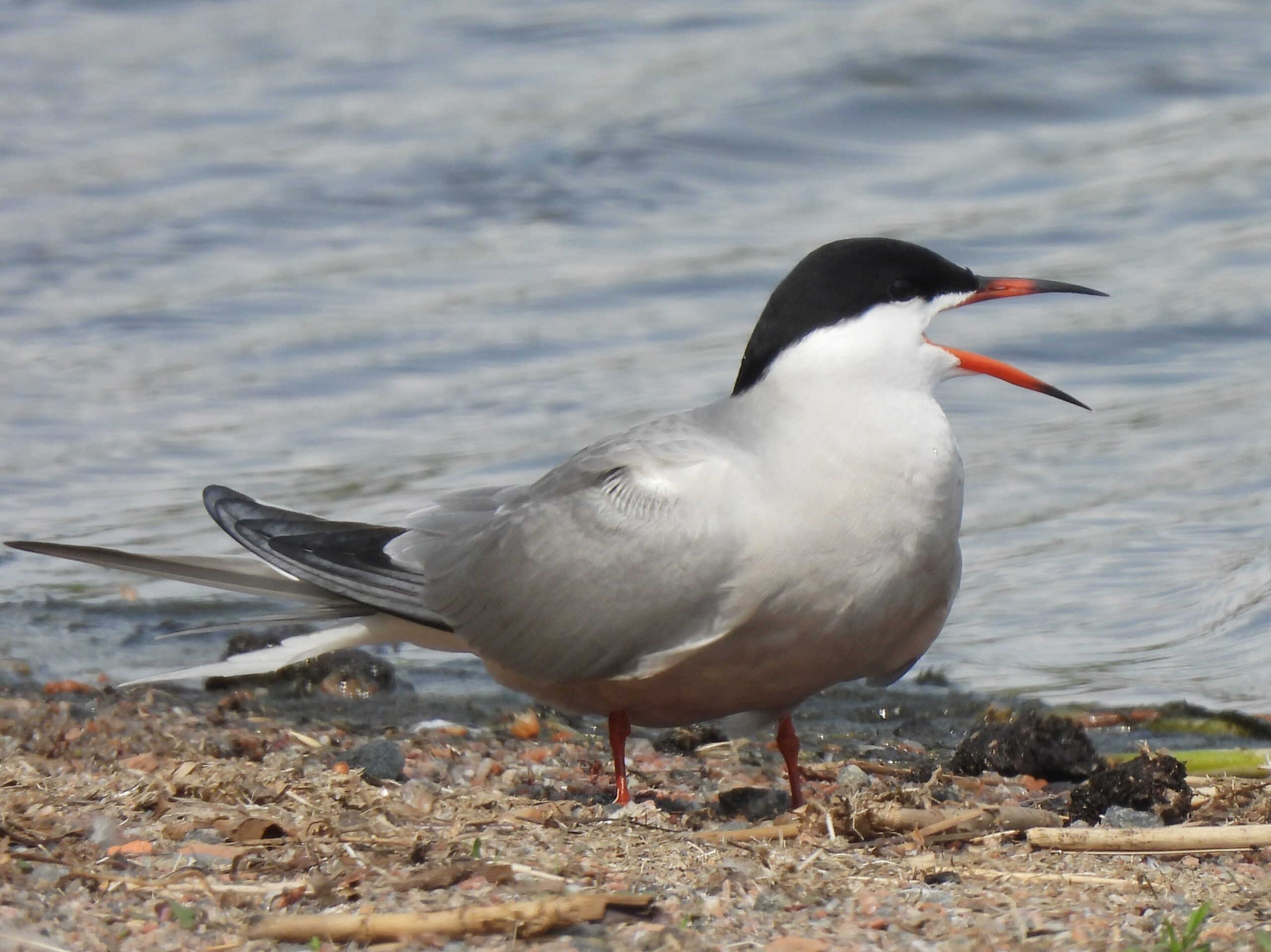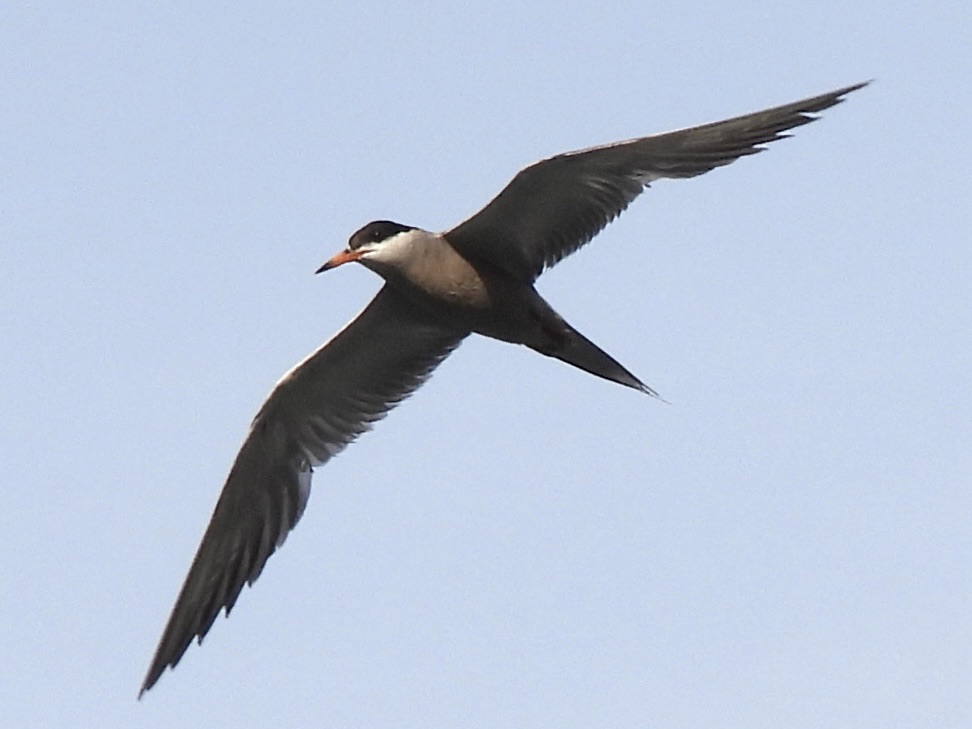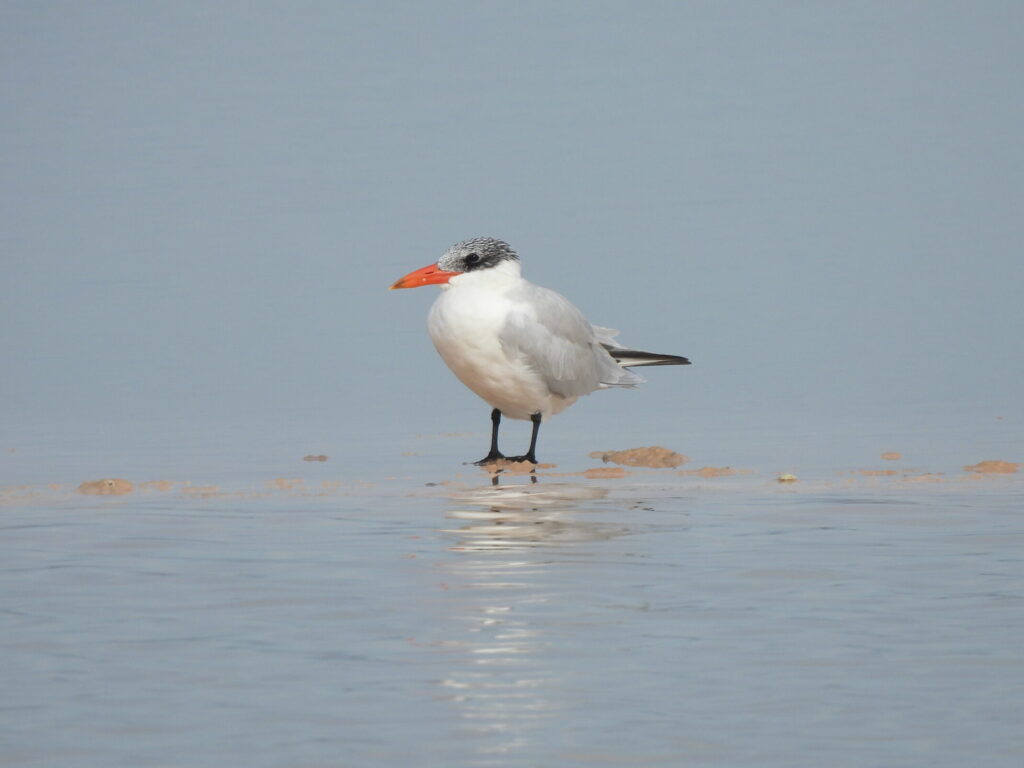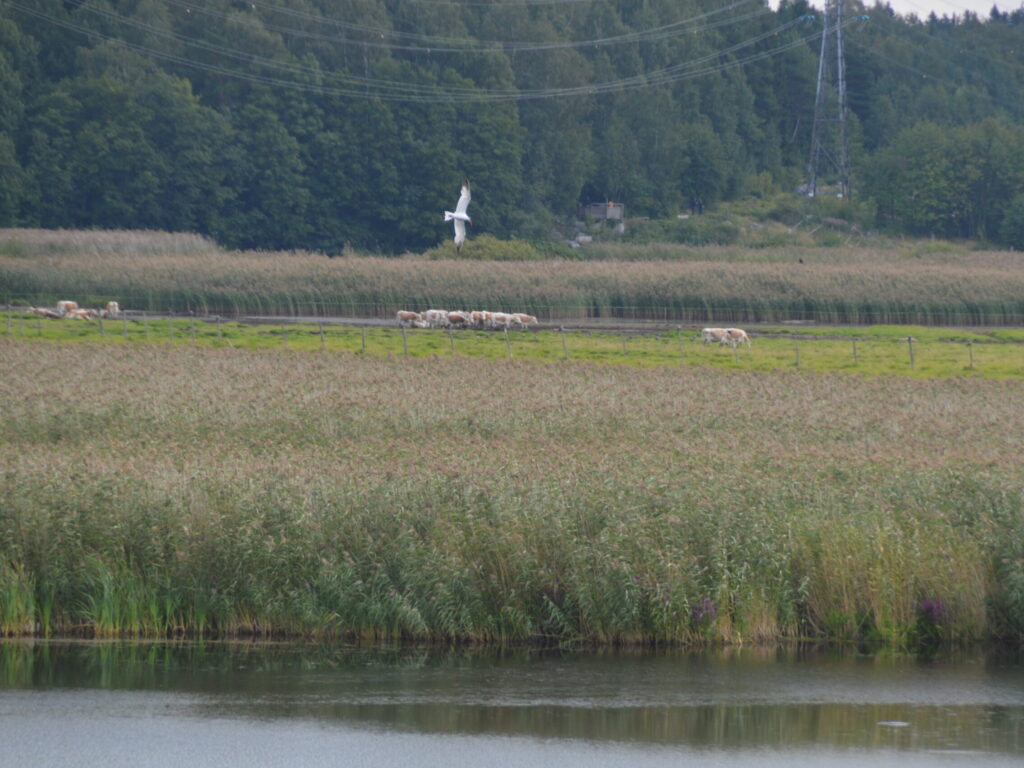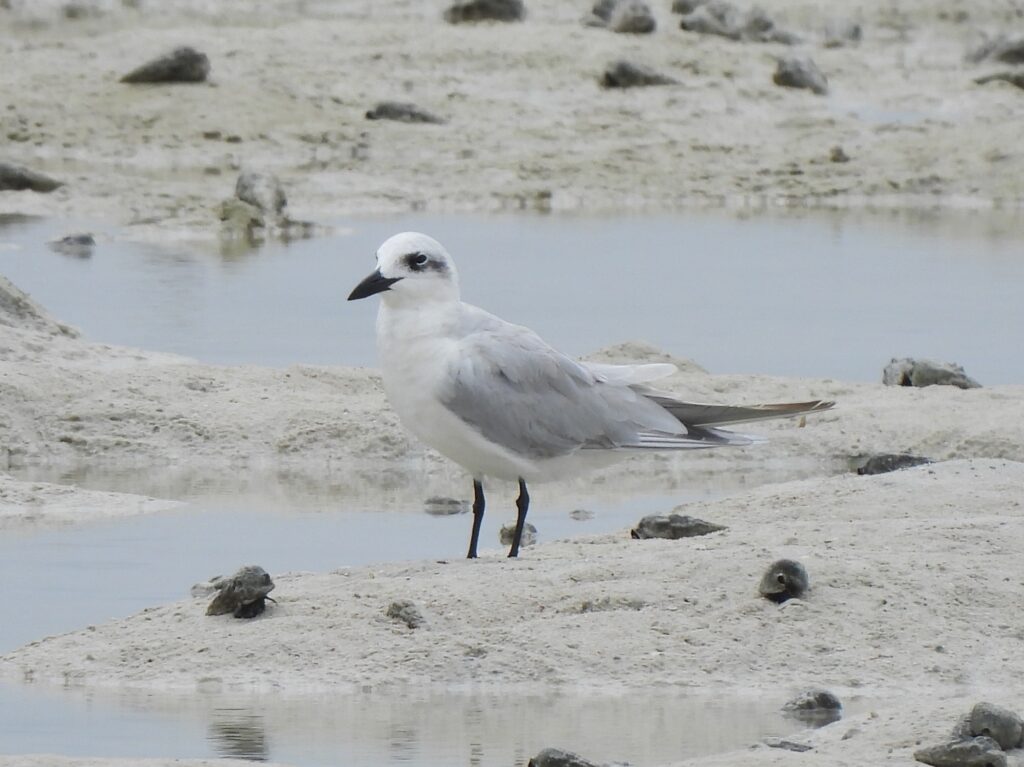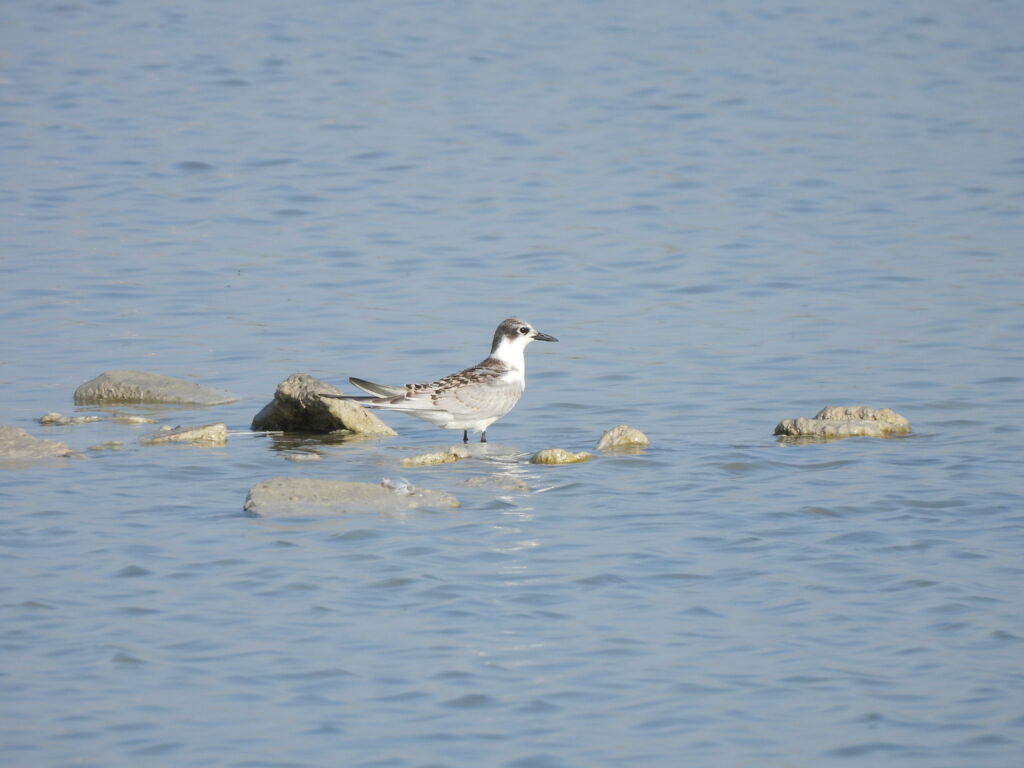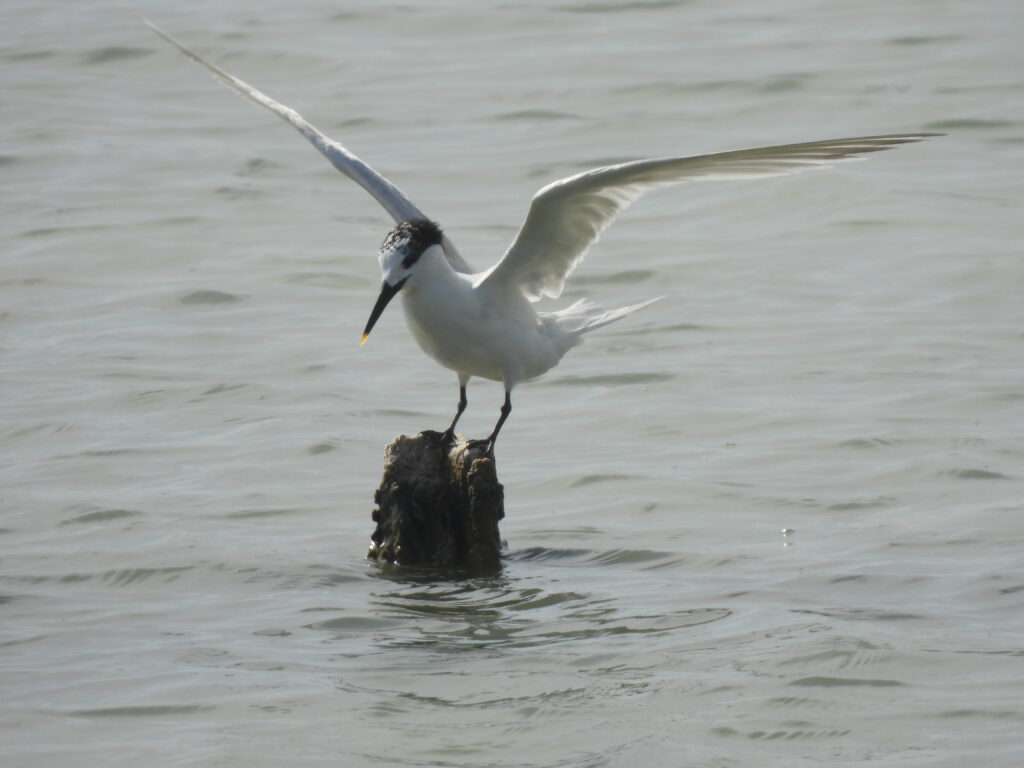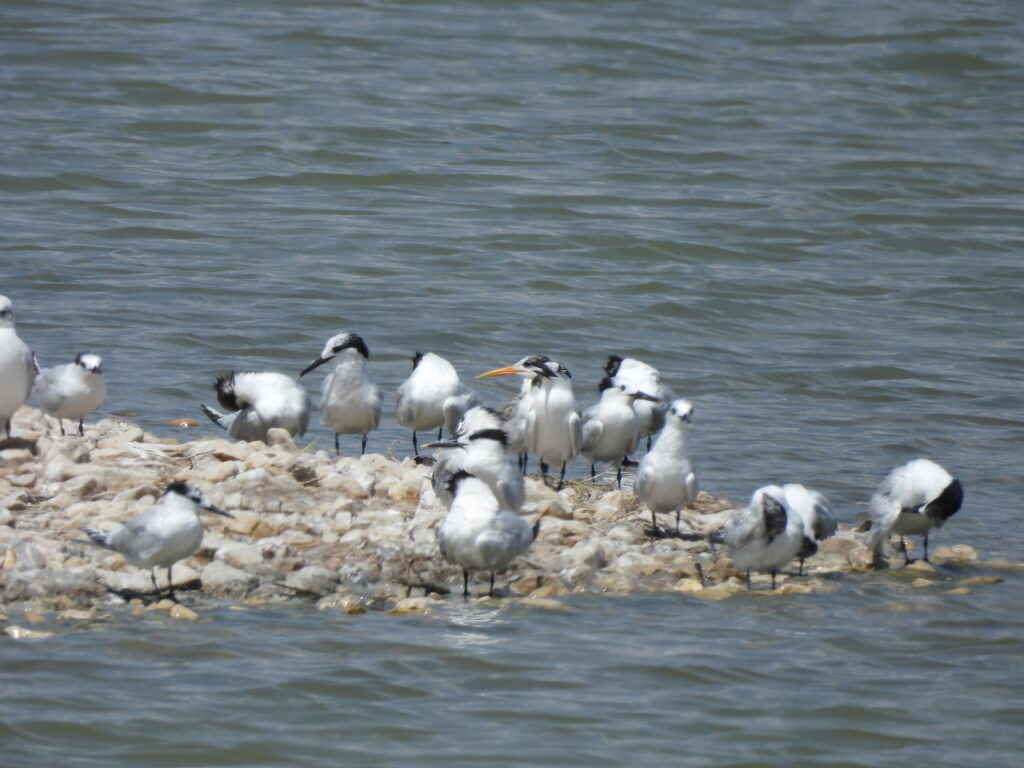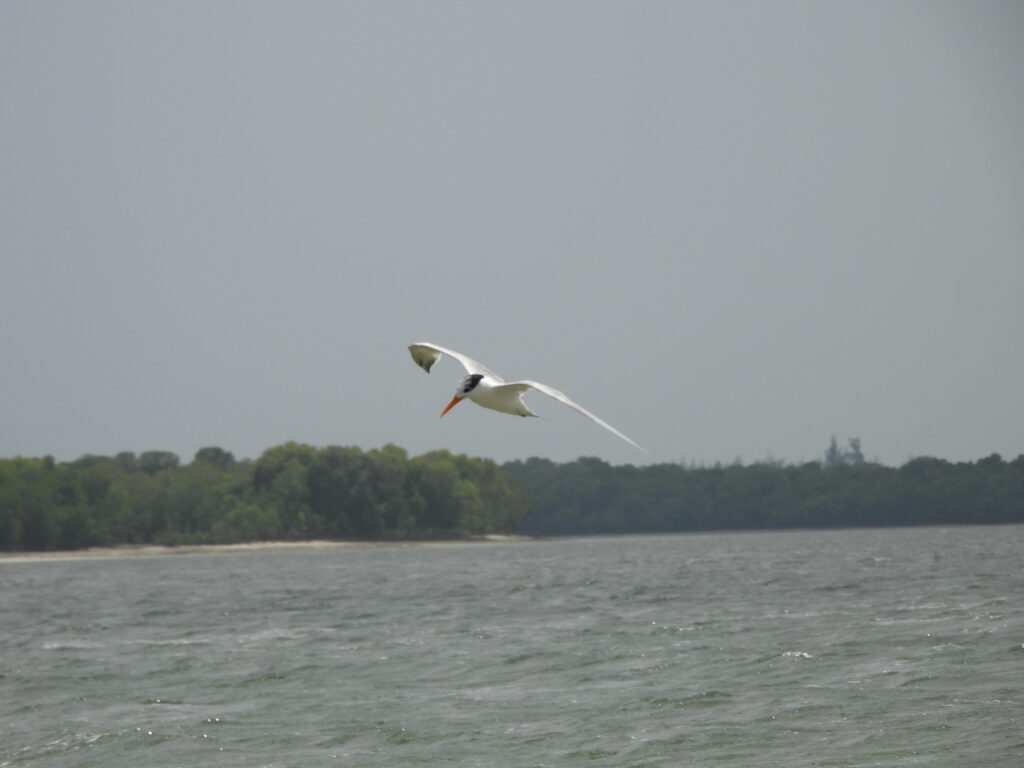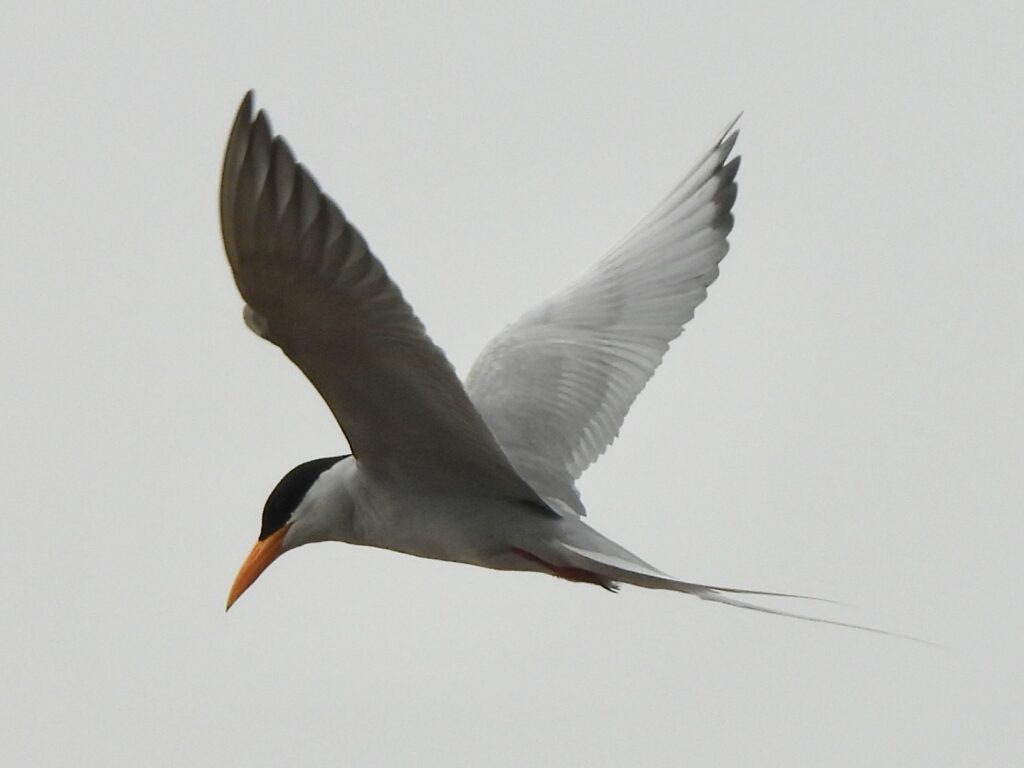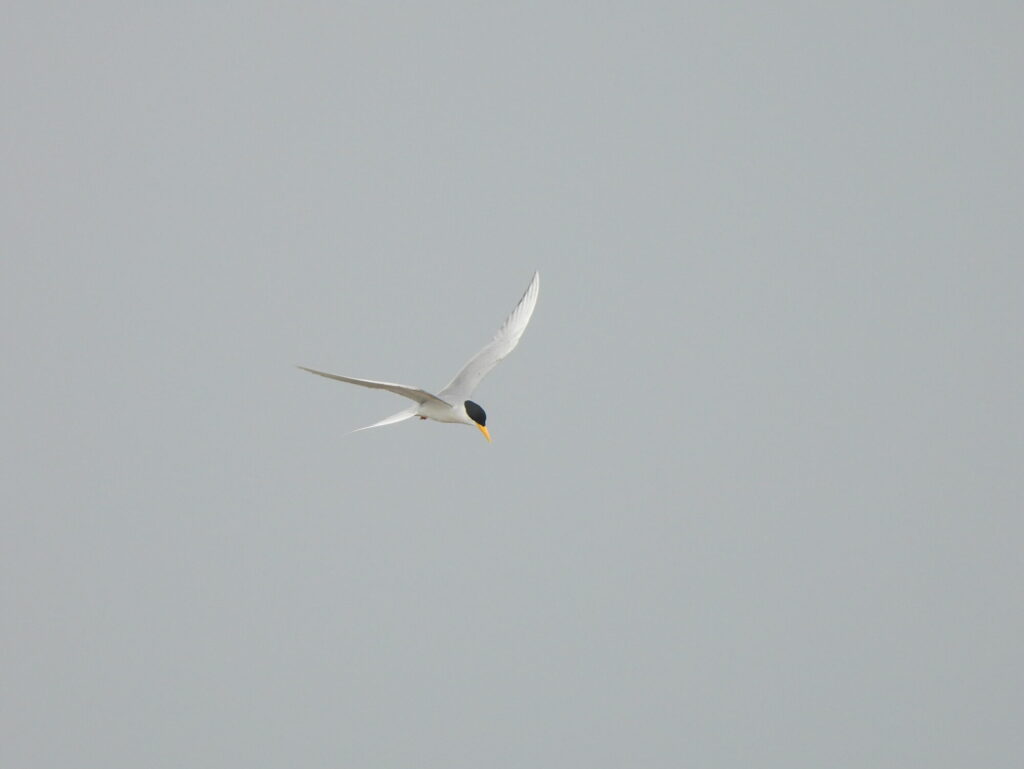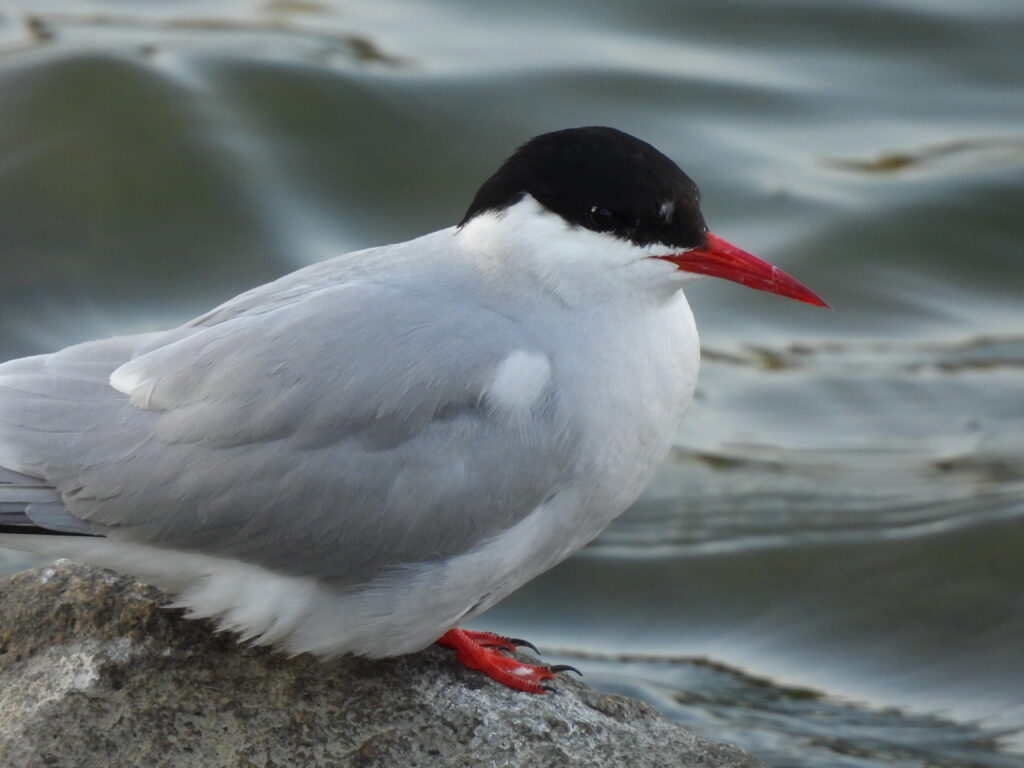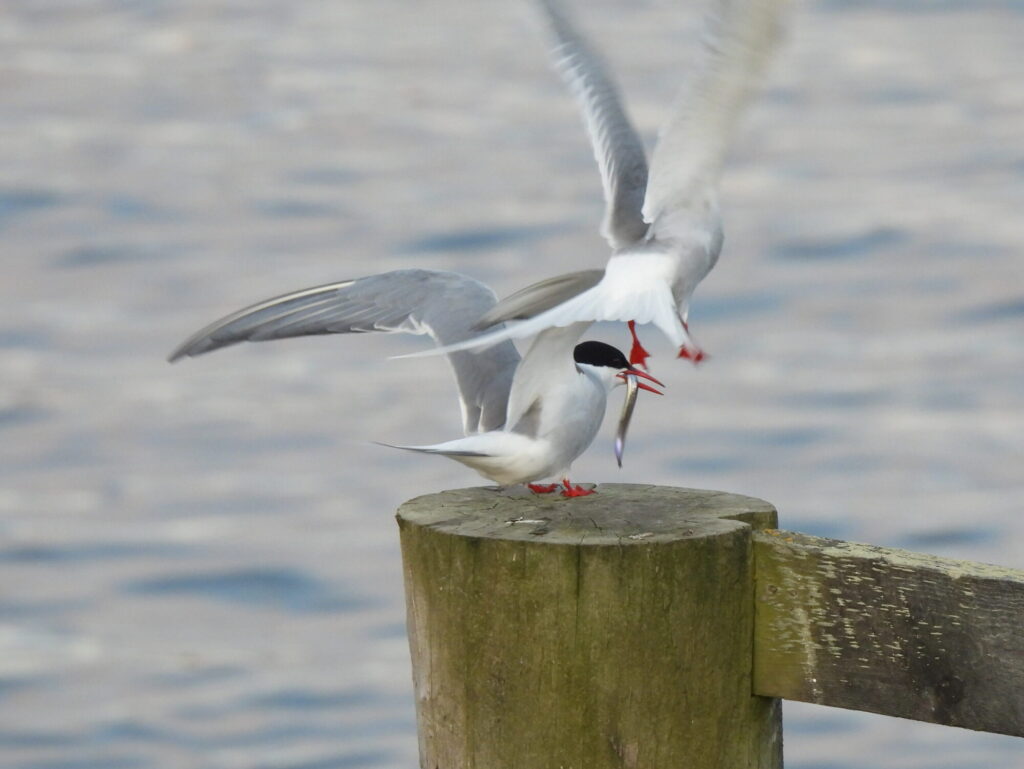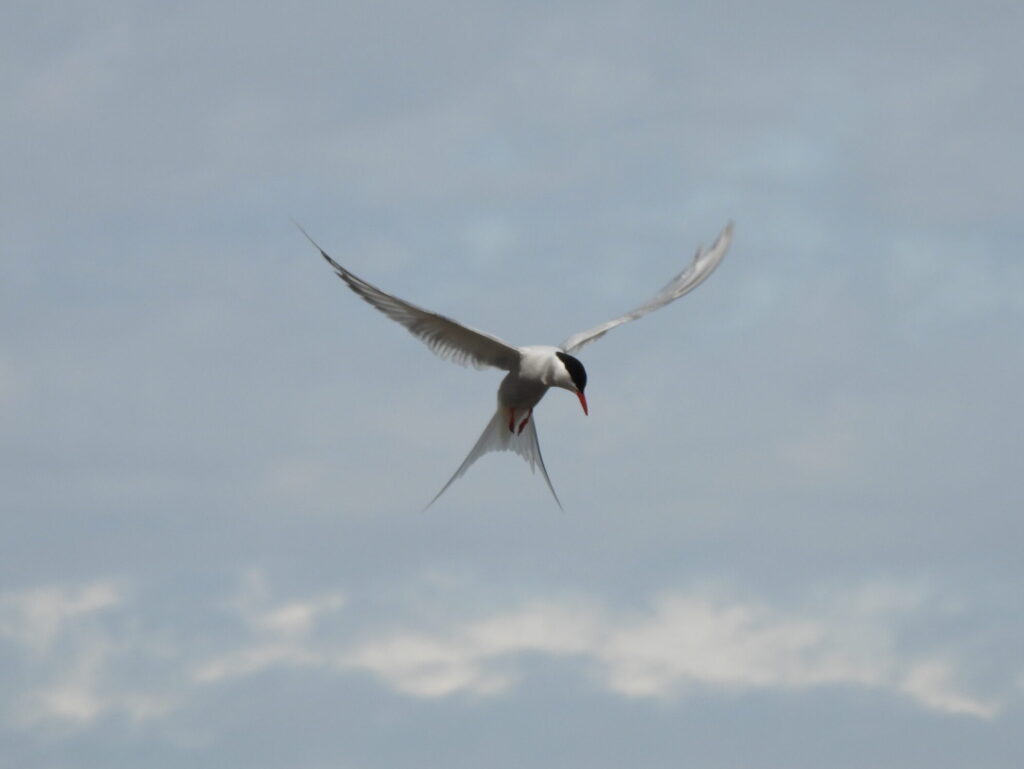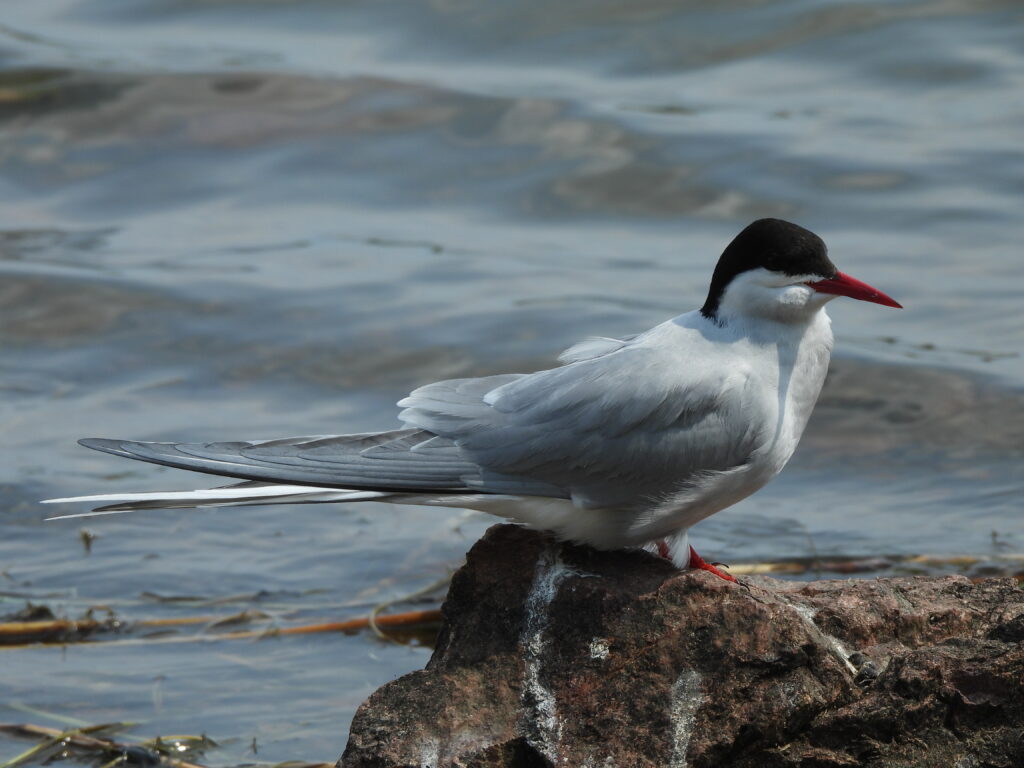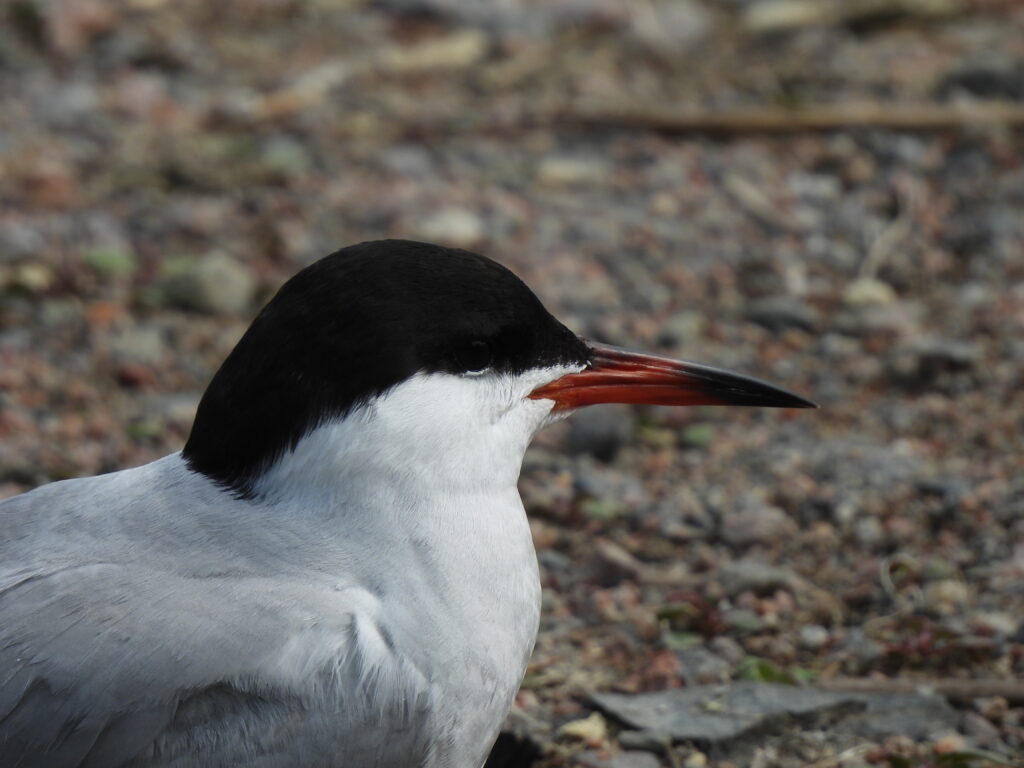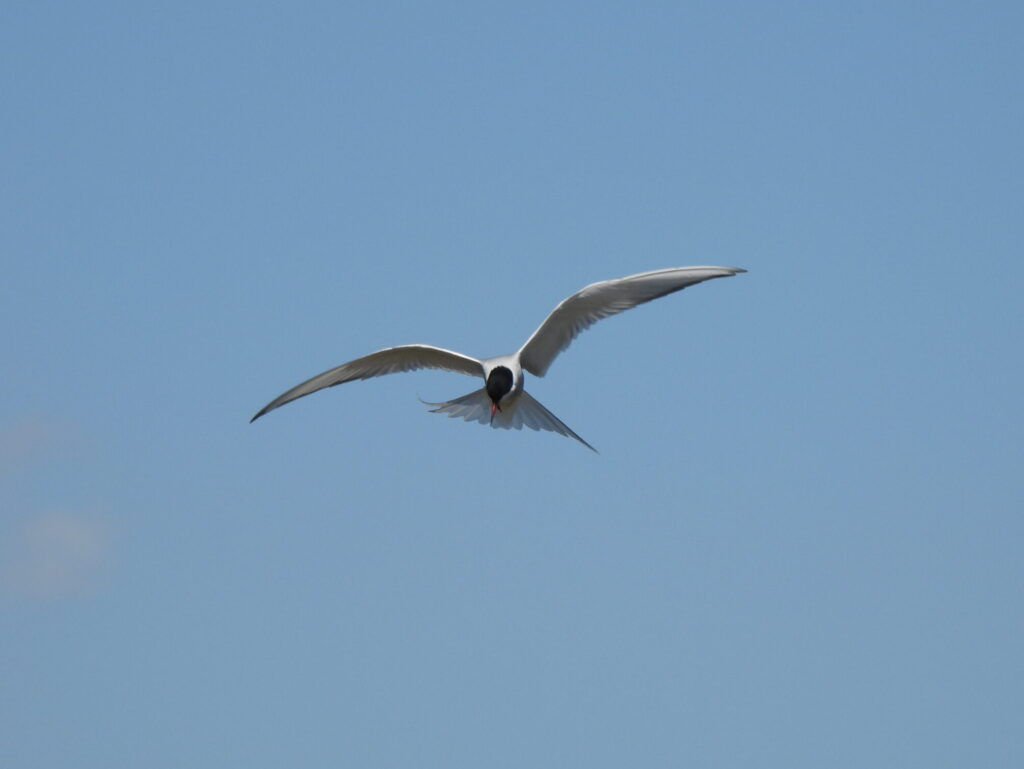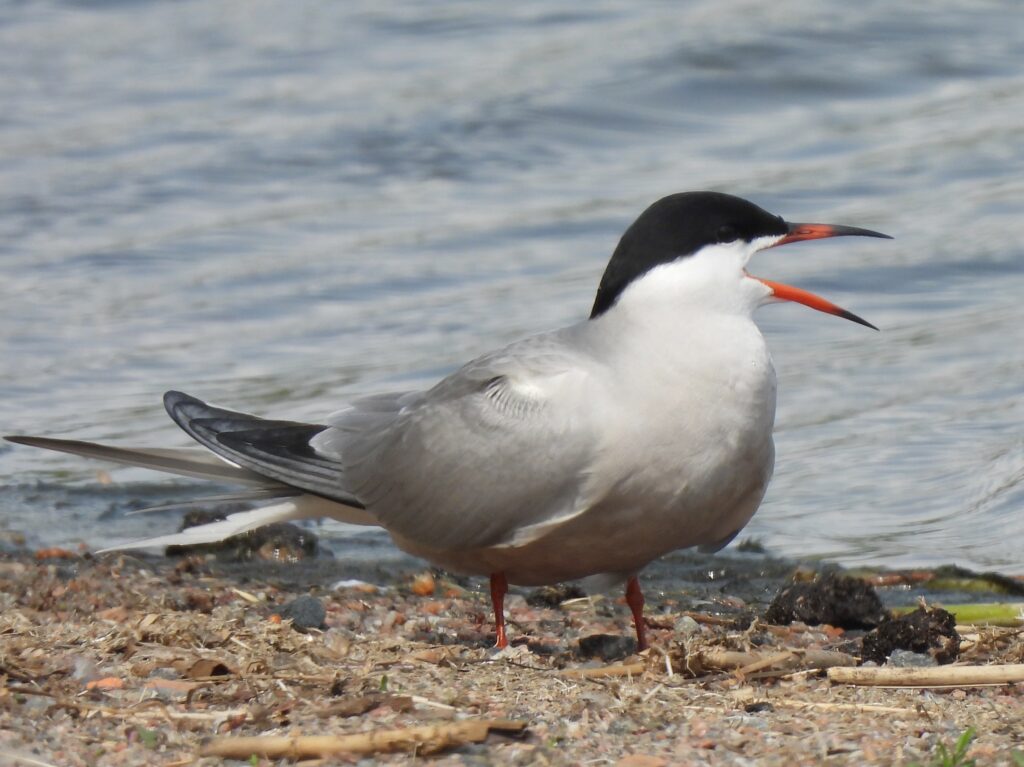The gulls, terns and skimmers (family Laridae) are a distinct family of birds belonging to the order Charadriiformes, often regarded as shorebirds. They have a cosmopolitan distribution among coastal areas of all continents including Antarctica, and different species are widespread in inland water bodies. They are perhaps the most aerial of shorebirds, with some species adapted to marine life on the wing in the pelagic zone, performing migration routes of over 20,000 km. While many species have benefitted from human development for trophic resources or breeding areas, several species occur in remote areas and low densities, with few threatened of extinction for different reasons.
The family comprises 105 species in 23 genera, traditionally classified in three groups. The skimmers (subfamily Rynchopinae) belong to genus Rynchops (3 species) found in tropical and subtropical America, Africa and southern Asia.
The terns (subfamily Sterninae) belong to different genera. Genera Gygis (3 species) and Anous (5 species) — most often known as noddies — are pelagic and mostly distributed along tropical ocean waters. Meanwhile, Onychoprion (4 species), Sternula (7 secies), Phaetusa (1 species), Hydroprogne (1 species), Gelochelidon (2 species), Larosterna (1 species), Chlidonias (4 species), Thalasseus (7 species) and Sterna (13 species) are well distributed in all oceans and seas, including polar regions.
The gulls (subfamily Larinae) are widespread in all continents except Antarctica. This group includes genera Creagrus (1 species) from the Galapagos; Hydrocoloeus (1 species), Rhodostethia (1 species), Rissa (2 species), Xema (1 species) and Pagophila (1 species) from the Arctic region; Saundersilarus (1 species) from eastern Asia; Leucophaeus (5 species) from the New World; Ichthyaetus (6 species) from the Old World; and cosmopolitan genera Chroicocephalus (10 species) and Larus (25 species). Interesingly, several taxa of this last genus are the classic example of ring species speciation — that is, birds differing along a gradient following a latitudinal range that eventually become parapatric and end up in populations unable to interbreed co-occurring at both ends of the ring.
Little tern
Sternula albifrons
Breeds in colonies on sandy or gravel shores inland across Europe and central Asia to central Africa and Australia, but migrates mainly to the pelagic zone of the southern ocean waters during boreal winter. River management has decreased the numbers of different populations, especially in Europe. This species is a summer visitor and breeds on seabird colonies in Alicante.
Caspian tern
Hydroprogne caspia
Despite what its name suggests, this species breeds and occurs in lakes and large wetlands in all continents except most of South America and Antarctica, albeit generally locally and in rather low densities. It is the largest species of tern. The species is an uncommon visitor during migrations and winter in Alicante, and a local summer visitor in Helsinki.
Gull-billed tern
Gelochelidon nilotica
Breeds locally and occurs in all continents except Antarctica, often foraging in mudflats and saltwater wetlands for crabs, amphibians and small mammals — unlike most terns. Despite being generally associated to water bodies along most of its range (as I have observed in wintering areas in Kenya), this species breeds and forages also in several drier cropland areas in Alicante, where it is a summer visitor.
Whiskered tern
Chlidonias hybrida
Distributed across inland freshwater wetlands of the warm regions of the Old World, with migratory populations on temperate regions. As it is typical in its genus, it does not typicially plunge-dive but capture food on the surface with its characteristic buoyant flight. The species is an summer visitor in most wetlands of Alicante.
White-winged tern
Chlidonias leucopterus
Breeds in marshes of eastern Europe through Central Asia to the Russian Far East and migrates to different freshwater wetland habitats in Africa, Southeast Asia and Australia. Breeding plumage features namesake white forewings and tail on a jet black body. This species is an irregular visitor in Alicante on passage and rarely during winter, but I have seen several also in Kuwait.
Black tern
Chlidonias niger
Breeds locally in freshwater wetlands of the northern hemisphere and migrates through the pelagic zone to coastal areas of southern Africa and South America, becoming almost exclusively marine during the non-breeding period. The Old World nominate race is relatively distinct to the ‘American‘ surinamensis race. This species is a localized non-breeding summer visitor and migrant in Alicante.
Sandwich tern
Thalasseus sandvicensis
A coastal tern breeding in shore areas of the northern hemisphere and wintering in the sea in coastal regions of South America, Africa and the Arabian Sea. It is the only dark-billed member of its genus, with both the Old World nominate and North American acutiflavus forms featuring a black bill with a yellow tip, although the distinctive South American ‘Cayenne‘ eurygnathus form of has a full golden bill. This species can be seen year-round in the coasts of Alicante and breeds locally.
Elegant tern
Thalasseus elegans
This Pacific Ocean species breeds in extremely dense colonies mainly at few islets of the Gulf of California and forages along the Pacific coastline especially around the Humboldt current. Despite being off-range rare vagrants, few individuals have recently shown up in the Western Palearctic and since attempted to breed almost annually in different coastal wetlands of the region, at times hybridizing with Sandwich terns. Accordingly, the species has repeatedly shown around summer within a tern colony in Alicante.
Lesser crested tern
Thalasseus bengalensis
Present in coastal areas of the Old World’s warm regions, including the northern Indian Ocean, Indonesia, northern Australia and locally in the Mediterranean. Populations of some regions seem to be sedentary while most migrate away from breeding grounds to southern and western Africa. I have seen good numbers of this species in coastal Kenya and Dubai, plus an individual far inland in Antananarivo, Madagascar — to my understanding the first-ever regional record of this rather strict coastal shorebird.
River tern
Sterna aurantia
Endemic to inland wetlands of the Indian Subcontinent, where it breeds on sandy islands and is commonly found in large slow-flowing rivers with proper vegetation. There are also some populations around Southeast Asia. It is rather heavily built and has a large, sturdy bright-orange bill. I have seen this species in India.
Arctic tern
Sterna paradisaea
Renowned for performing the longest regular migration of all animals, moving up to 80,000 km yearly from their breeding colonies mainly in the coastal Arctic south to the Antarctic Ocean during the austral summer. Accordingly, this is likely the species most exposed to sunlight known globally. It travels along the pelagic zone and lives on the wing most of its life, although it usually rests on the Antarctic ice flows. This is a common summer visitor in different wetlands and beaches of Helsinki.
Common tern
Sterna hirundo
Widespread in summer on islands, shores and wetlands of all boreal and temperate regions of the northern hemisphere, then migrating to coastal areas of the southern hemisphere, reaching the south ends of South America, Africa and Australia. Most birds show a red bill with a dark tip, except the Asian form longipennis featuring an all-black bill. This bird is a common summer visitor in Alicante and Helsinki.
White-cheeked tern
Sterna repressa
Endemic to the Middle East and East Africa, with its stronghold populations in the Persian Gulf, Red and Arabian Seas. They prefer to forage around and close to coral reef areas, which they also use for breeding, but some individuals have ventured up the Nile River and to western India. I have seen this species in the coast in urban Dubai.

